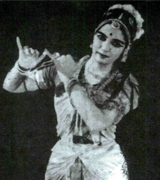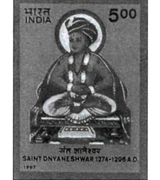Special Feature
Some Dance Costumes: Past & Present

From time immemorial, the wearing of new clothes, for both men and women, young and old, on festival days has been mandatory. For a dancer, the arangetram—debut dance recital, is a festive occasion to be cherished throughout her life. What sort of costume should be worn on that day? What was the old custom? For an answer we may begin with the rangapravesam of Kadur Venkatalakshamma at the age of 13, in 1919 at Mysore.
It is customary that no article of clothing of the debutants should have been used before. Venkatalakshamma was dressed in a new pair of pyjamas over which was tied a new nine-yards saree. Since she, like other dance aspirants, had practised dancing wrapped in nine-yard cotton sarees all along, she was not intimidated by the length of the garment. The saree was kalapattu or kinkappu quality silk with gold lace work. The pallu of the saree was gathered and tucked in front, prominently displaying the zari work. Around her waist was a gold oddiyanam or waist-belt. Her plaited hair ended in a kucchu (kunkulam) and was decorated with appropriate jewels. Her neck was adorned with a kaassina sara (chain of gold coins or kaasu maalai) addiga (necklace) encrusted with precious stones and such other ornaments. These jewels were made of genuine rubies, diamonds, emeralds, pearls and gold. There was no suggestion of cheap glitter (Sruti 37/38, p. 22).
A Series For Youngers
Stamp On Jnaneswar

Jnaneswar (also called Jnanadev and Dnyaneshwar) lived in the 13th century AD in Maharashtra. Jnaneswar and Namdeo were contemporaries. And it was the latter who has given us an authentic biography of Jnaneswar.
Stamp on Jnaneswar
The Dept. of Posts issued a stamp on Jnaneswar on 5 March 1997. (The Dept. followed the Marathi spelling Dnyaneshwar.) It is a multi-coloured stamp, in the denomination of Rs. 5; perf. 13; and printed on un-watermarked adhesive gravure coated stamp paper by photogravure process in India Security Press, Nasik.


